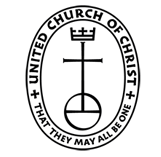In the Garden – sermon on April 16, 2017 Easter Sunday
John 20: 1-18 Early on Sunday morning, while it was still dark, Mary Magdalene came to the tomb and found that the stone had been rolled away from the entrance. She ran and found Simon Peter and the other disciple, the one whom Jesus loved. She said, “They have taken the Lord’s body out of the tomb, and we don’t know where they have put him!”
Peter and the other disciple started out for the tomb. They were both running, but the other disciple outran Peter and reached the tomb first. He stooped and looked in and saw the linen wrappings lying there, but he didn’t go in. Then Simon Peter arrived and went inside. He also noticed the linen wrappings lying there, while the cloth that had covered Jesus’ head was folded up and lying apart from the other wrappings. Then the disciple who had reached the tomb first also went in, and he saw and believed – for until then they still hadn’t understood the Scriptures that said Jesus must rise from the dead. Then they went home.
Mary was standing outside the tomb crying, and as she wept, she stooped and looked in. She saw two white-robed angels, one sitting at the head and the other at the foot of the place where the body of Jesus had been lying. “Dear woman, why are you crying?” the angels asked her. “Because they have taken away my Lord,” she replied, “and I don’t know where they have put him.” She turned to leave and saw someone standing there. It was Jesus, but she didn’t recognize him. “Dear woman, why are you crying?” Jesus asked her. “Who are you looking for?” She thought he was the gardener. “Sir,” she said, “if you have taken him away, tell me where you have put him, and I will go and get him.” “Mary!” Jesus said. She turned to him and cried out, “Rabboni!” (which is Hebrew for “Teacher”). “Don’t cling to me,” Jesus said, “for I haven’t yet ascended to the Father. But go find my brothers and tell them, ‘I am ascending to my Father and your Father, to my God and your God.’” Mary Magdalene found the disciples and told them, “I have seen the Lord!” Then she gave them his message.
Sermon: In the Garden by Rev. Doreen Oughton
What a blessing to have a 3-part play this morning in just 18 verses of scripture! The curtain opens in the first act with Mary Magdalene, Jesus’ beloved and trusted companion, heading out in the wee, still-dark hours of the morning to go to the tomb where he has been laid. Has she been unable to sleep, replaying over and over all the things that happened in just the past few days? Did she just want to be as close as she could to what was left of him? Did she want to do her grieving in the private, quiet darkness? There is enough light when she arrives that she can see that the stone has been rolled away. She was not expecting that, and it sent her running back to the others. We are not told that she looked in the tomb and saw it was empty, so it may be that she jumped to a conclusion about grave robbery. Or maybe John just left that detail out. Either way, Mary doesn’t tarry long there in the dark with the tomb opened. She runs back to get Peter and the other disciple, and shares her dismay over this one more insult to her beloved Jesus. Curtain closes on Act I.
Act II is full of details. Now John uses lots of symbolism in his gospel, so it all probably means something, but there is not widespread agreement, no one right answer. Perhaps we can let associations come to us as we consider the passage. Time is passing, and the sun is probably rising by now, as the two set out. Some speculate that the unnamed “other disciple” is unnamed so that we can insert ourselves there, running along with Peter to see what Mary is talking about. John tells us who got there first, who went in first, how the linen wrappings were lying there, while the cloth that had wrapped Jesus’ head was not with the other linens but carefully rolled and placed somewhere else. The unnamed disciple came to some conclusion – John tells us he “believed” – but not that Jesus was risen. Probably he believed that Mary was right that someone took the body out of the tomb. This act ends as these two return to their homes, possibly just passing without a word to Mary as she stands weeping.
Curtain opens again with Mary still weeping, bending over to look into the tomb. She sees 2 angels who speak to her. To me this is evidence of Mary’s deep spirituality and connection with Jesus. She is unafraid of the angels – doesn’t seem the least surprised. I wonder if she has grown in her spiritual vision and has experienced guidance and care from angels before. She simply answers the question – she is distraught that the body has been taken. She is distracted from the conversation when she catches sight of someone who might have an answer for her – who might know better than the angels(?) – where the body is. She turns to ask this person she presumes is the gardener what he knows about it. He speaks her name, and she sees it is her Rabbouni, her teacher, her Lord, her beloved. She must run to him, perhaps opening her arms or even embracing him, and Jesus says she must let go.
It struck me as I rehearsed my lines, and in going over the rest of the passage, how much reference there is to laying. Mary wonders aloud three times about where he has been laid, the disciples find the linens lying there, the angels sitting where Jesus had been lying. In contrast to this, we have John reminding us in scene two that scripture said Jesus would rise, and Jesus, in conversation with Mary, twice referred to ascending to his Father.
But the symbolism that called to me most in this passage is Mary supposing that Jesus is the gardener. It occurred to me that for that thought to occur to Mary, she had to be in or very close to a garden. Jesus was buried in a garden. And I love that the passage doesn’t say she mistook him for a gardener, only that she supposed that that was what he was. I mean, what if she wasn’t mistaken at all?
One of the beautiful things about the stories in the bible is that they resonate so much with other stories in the bible. When you think of biblical gardens, what comes to mind? Garden of Gethsemane, Garden of Eden, right? So let’s start with the Garden of Eden. In this second of the two creation stories, God created a human from the earth, breathed life into him, then planted a garden and placed the man in it, to till it and keep it. So Adam is the first gardener. God worries about Adam being lonely, so from the ground God creates every animal and bird, and invites Adam to name them. Adam does so, but didn’t feel he’d found a true partner in any of them. So God took one of Adam’s ribs and created a partner who was flesh of his flesh and bone of his bones. They tended the garden together, and were very happy together until that snake came along. Long story short, they succumb to temptation, disobey God by eating from the tree of knowledge of good and evil and are sent from the Garden.
And then just this past week – Maundy Thursday and Good Friday, we read about Jesus on the night he was betrayed, going out after supper to another garden – the garden of Gethsemane. He returned to a garden in his redemptive work. He faced and accepted his call in that garden – his call to tend to the garden of lost souls by offering up his very life. He watered that garden with his tears. While on the cross, he promises the man beside him that they will be together in Paradise – and what is paradise but an amazing garden, right? And then his body is taken to this empty tomb in his friend Joseph’s garden – Joseph of Arimethea. Finally, after being resurrected, he returns to the garden, taking over where Adam and Eve left off.
Now some say Jesus succeeded where Adam and Eve failed. Those humans were the bad gardeners, while Jesus is the good gardener, the obedient gardener. But I don’t see it that way. I loved Kayleen Asbo’s reflection on what a poetic writer John is, how the very first line of his Gospel resonated all the way back to Genesis – “in the beginning.” He continued – “In the beginning was the Word,” or “in the beginning was the logos.” Logos can mean “word,” but it has layers of meaning. It can also refer to “story.” In the beginning was the story. And John tells that story with symbolism, with a narrative arc, and a symmetry that has us, in the words of TS Eliot, “arrive where we have started and know it for the first time.”
So perhaps when Jesus returns as the gardener, it is not because Adam and Eve were bad gardeners, not because they failed. It is so that we know that the story continues. God created and is creating. We are sent out with knowledge, the knowledge of good and evil. We misuse our knowledge because we forget who and whose we are. But we can come back to the garden with a second naivete. We can repent, or turn around. We can develop within ourselves a new willingness to let Jesus nurture our souls, and provide what we need. We can partner up with God to not only name but to help create. We too can be in paradise with Jesus, and we don’t have to wait until we die.
When we come to believe and act upon the belief that Jesus is a good gardener, it has the power to transform us. It may lead to us being unsurprised by angels checking in on how we are feeling. We may begin to consider that some of the “crap” that happens may just be fertilizer that we need to grow. We may learn, in time, to value even the painful experiences of being pruned, knowing that it leads to growth and flourishing, even if we look and feel pretty bare for awhile.
I love the image of Jesus as a gardener, getting his hands right into that dirt, that humus that we humans and every other creature were formed from. What might he want to plant in your heart, what seeds does he sow in your life? I’m not the only one captivated by this image. Kayleen Asbo had this image on her web-page, a stained glass window by Edward Burne Jones. And here are a few I found on-line by doing a google image search of Jesus the gardener by Rembrandt and Fra Angelico. We might formulate our own image of Jesus the gardener, maybe in overalls with a trowel, with a bandana or visor. Maybe raking away the old wet leaves covering the new growth eager to spring up on this glorious Easter morn. I can’t wait to see what blooms. Easter blessings. Amen.








